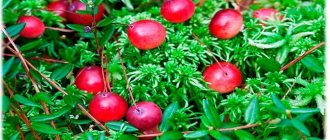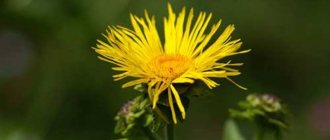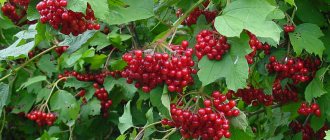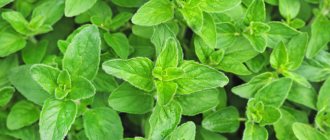Asparagus is the name given to a whole group of perennial shrubs that look like fir trees with soft needles. In our country, this plant is better known as asparagus - branches for decorating flower bouquets.
In culinary terms, asparagus refers to the young shoots of asparagus that are eaten. Many people mistakenly call asparagus soy (Korean) asparagus. In fact, this product has nothing to do with asparagus. Soy asparagus, or fuju, is the dried foam collected from the surface of soy milk by boiling.
Sometimes asparagus is the name for green beans, which is a legume plant and also has nothing in common with asparagus, except for a similar appearance and juicy green color.
What it is
Asparagus (asparagus) is a herbaceous plant of the Asparagus family. For culinary purposes, three varieties of asparagus are cultivated: white, green and purple. These shoots are not produced by different types of asparagus plants: they are distinguished only by the method of cultivation and the degree of maturity.
Content:
- What it is
- Chemical composition
- Beneficial features
- Possible harm
- Application in medicine
- Use in cooking
- How to select and store
- Conclusion
White asparagus
White shoots are considered a delicacy. White asparagus is harvested in March-June. To prevent the shoots from turning green during the growth process, the rhizomes of plants with shoots are hilled up and sprinkled with loose soil so that sunlight does not fall on them. This stimulates the growth of asparagus, but does not accumulate chlorophyll in it, so it remains white.
Green asparagus
Green shoots are harvested all year round. This variety of asparagus accumulates a lot of chlorophyll, which turns the shoots green. These shoots have a brighter taste than white shoots.
Purple asparagus
Purple shoots rarely appear on retail shelves. In order for the shoots to acquire this shade, they are grown in the dark, exposed to sunlight only a few times during the entire growth period. During the ripening process, anthocyanins accumulate in such asparagus, which give the shoots a characteristic bitterness. The peculiarity of purple asparagus is that it turns pale when cooked.
Growing technology
Agricultural work differs in different years of the asparagus growing season. Asparagus in the year of planting, in the second year of the growing season and in the third year of the growing season (+ all subsequent ones) requires different care and agrotechnological measures.
Asparagus can produce its first small harvest already in the second year of its life, and in the third year of the growing season it begins to fully bear fruit.
Basic tillage
Before planting asparagus, you need to carefully prepare the soil. It is better to do this in advance - 1 year before the expected planting. Asparagus roots go deep to 80-100 cm, so deep cultivation (deep plowing and chiseling) is a necessary measure during basic soil cultivation. As practice shows, deep cultivation at 60 - 70 cm can give an increase in yield by 10-12%. In this case, you need to ensure that pebbles and clay from the lower horizons do not rise to the top. However, it is not always possible to carry out such treatment, so it is recommended to loosen the layer to at least 40 cm. After the main treatment, the soil should settle a little. Next, it is leveled and surface tillage is carried out - disking and cultivation.
Along with the main processing, organic fertilizers (manure) are applied in a volume of 40-60 t/ha.
Pre-planting soil preparation
In the spring, first of all, it is necessary to create optimal conditions for planting and rooting of seedlings. For these purposes, early spring harrowing is carried out to cover moisture and cultivation. The cultivation depth should be at least 14 cm. If the soil is insufficiently moistened, you can use moldless loosening or disking.
Before cultivation, mineral fertilizers are applied.
Features of planting asparagus
Asparagus is planted in seedlings. Farmers in Germany usually buy ready-made seedlings. Planting is carried out using specialized machines. The distance between plants, depending on the variety, should be 25-35 cm, between rows 1.2-1.8 m. The optimal planting depth for white asparagus is 18-22 cm, and for green asparagus 12-15 cm.
When planting, you must remember to leave tramlines for the passage of equipment when spraying crops and harvesting.
Planting care in the first year of growing season
In the year of planting, we actively fight weeds. Since the asparagus plants are still very weak, their planting scheme leaves a lot of free space for the favorable development of weeds.
Preference should be given to mechanical weed control, for example, repeated inter-row cultivation, since young asparagus plants are very sensitive to herbicides. If there is a need to use a herbicide, then only in a minimal dosage.
Asparagus cultivation technology.
When plants are affected by diseases and pests, it is necessary to carry out insecticidal and fungicidal treatments in a timely manner.
In arid regions we organize watering.
In November-December, bushy above-ground shoots are mowed down and removed from the field.
Second year of asparagus growing season
In March - April, when the soil becomes physically ripe, asparagus is hilled. (If you are growing green asparagus, you don't need to do this). The height of the ridges should be 30-40 cm, and the width should be about 40. Hilling is carried out with a special soil cutter, which is suspended in front of the tractor, and behind the cultivator. Which cultivates the soil along the edges of the formed ridge. It is necessary to pay attention to the fact that the ridges are not over-compacted, otherwise crooked stems will grow.
Before sprouts appear, herbicide treatment is carried out (more details in the section “Asparagus protection system”).
Already in mid-late May we can get the first harvest.
After completing the asparagus harvest, it is recommended to carry out inter-row cultivation and apply mineral fertilizers according to the recommendations. When growing white asparagus after harvesting, smooth out the ridges formed during hilling. The depth of cultivation of fruiting asparagus should not exceed 12 cm
Then in the summer the planting is cared for as in the first year.
Third year of growing season
This year, after hilling white asparagus, you need to cover them with black and white film. At the beginning of spring, to stimulate the germination of asparagus, the film is placed with the black side up, which warms up better and transfers heat to the soil. This way you can get an earlier harvest and sell it at better prices. Next, at the end of the asparagus season, the film is turned over to the white side, which allows the soil to remain below ambient temperature, thereby allowing us to reduce the peak harvest and ensure a continuous harvest of asparagus throughout the season.
After completing the asparagus harvest, it is recommended to carry out inter-row cultivation and apply mineral fertilizers according to the recommendations.
Asparagus protection system
As a perennial crop, asparagus has a special protection system. Targeted and effective measures taken to protect culture will have an effect for many years. Therefore, it is especially important to take timely and effective protective measures here. The modern choice of drugs approved for use is very wide, and together with agrotechnical measures allows for sustainable control of weeds, pests and diseases.
Weed control
Before the harvest, which usually begins in mid-April, herbicide treatments are carried out, if necessary. Weeds grow especially actively on the ridges under the film. In this case, it is necessary to carry out targeted weed control after hilling and before the asparagus stems sprout. According to the experience of German farmers, the most effective are: Zenkor Liquid against annual broad-leaved and cereal weeds (pre-emergence soil spraying, 0.9 l/ha) or Stomp Aqua against a wide range of annual cereal and dicotyledonous weeds (pre-emergence spraying, 3.5 l/ha ).
After the asparagus harvesting period, the following are widely used to control weeds in Germany: Artist, Buctril, Centium, Lentagran, Zenkor Liquid, Stomp Aqua, Spectrum, Vorox F. Soil herbicides are best used immediately after the completion of the asparagus harvest. However, the effectiveness of such herbicides is highly dependent on soil moisture. If there is insufficient moisture, the results from using such herbicides are not good. It is also possible to carry out complex protection in combination with foliar herbicides, and to carry out cultivation between rows.
Young plants after germination are very susceptible to herbicides, so in any case it is necessary to treat with soil herbicides before seedlings appear.
Pests
When cultivating asparagus, we may encounter many pests. These include: the asparagus borer (Crioceris asparagi) or the spotted asparagus leaf beetle (Crioceris duodecimpunctata), the asparagus borer or asparagus fly (Platyparea poeciloptera), and others.
Asparagus fly (Platyparea poeciloptera) can be controlled using products containing dimethoate, for example Danadim Progress, rate 0.6 l/ha, can be applied both after harvesting and from the beginning of stem growth.
Products from the group of pyrethroids (for example Karate Zenon, Lamdex Forte) and neonicotinoids (Mospilan) are used against biting and sucking insects.
Diseases of asparagus officinalis
During the period before flowering and until ripening, asparagus is most susceptible to fungal diseases. During this phase, harmful fungal diseases appear, which greatly impede the development of asparagus bushes, which has a particularly negative effect on yields in subsequent years.
The main diseases of asparagus include: fusarium (Fusarium ssp.), asparagus rust (Puccinia asparagi), black rot (Stemphylium botryosum), gray botrytis (Botrytis cinerea).
The incidence of disease is influenced by the following factors: age of asparagus, planting density, varieties, weather conditions, terrain, fungicide properties.
Fungicides for treatment should be used specifically and adapted to asparagus plants. The following fungicides are used to control fungal diseases of asparagus: contact fungicides (Cuprozin progress, Funguran Progress, Polyram WG, Delan WG, Kumar, Kumulus WG); azole fungicides (Score); fungicides containing strobilurin (Luna Sensation, Ortiva, Signum); herbicides against botrytis rot (Switch, Luna Sensation, Ortiva, Signum).
At the time of massive disease damage, contact fungicides are used before flowering. 5-6 weeks after the completion of the cathedral, the risk of gray and black rot is especially high. If other diseases are present, prepare a complex tank mixture (if possible). Between flowering and the maturity stage, fungicidal treatments are also carried out as necessary. In this case, it is necessary to use herbicides with different active ingredients so as not to cause resistance.
In mid-September, the final treatment with fungicide is carried out. In recent years, in Germany it has been carried out with an effective mixture of Cuprozin progress + Kumar.
Chemical composition
Asparagus is a very healthy and low-calorie product. The shoots of this plant contain up to 92-95% water, as well as:
- carbohydrates - up to 5%;
- proteins - up to 2%;
- vitamins;
- minerals;
- saponins;
- coumarins;
- organic acids;
- phytosterols.
Asparagus is a storehouse of vitamins and minerals. There is an opinion that white shoots are healthier than green and purple shoots. This statement is only true of purple asparagus. But green shoots are unfairly accused: they contain more vitamins and minerals than the white vegetable. They also contain more water-insoluble fiber compared to other varieties: 100 g of raw green vegetables contains up to 10-12% of the body’s daily requirement.
Asparagus is a source of the polysaccharide inulin, which has a hypoglycemic effect.
Asparagus proteins are complete in composition, as they consist of all essential amino acids. However, their quantity in this vegetable is not enough to cover the daily requirement. 100 g of raw asparagus contains up to 10 mg of purine bases, which does not exceed 10% of the daily value, so asparagus can be consumed by gout patients, but in limited quantities.
This vegetable is rich in aspartic acid, an amino acid that improves nervous activity and lowers blood pressure.
Vitamins in green shoots
| Name | Content per 100 g, milligrams |
| Provitamin A (beta-carotene) | 0,5 |
| Lutein, zeaxanthin | 0,7 |
| Vitamin B1 (thiamine) | 0,1-0,14 |
| Vitamin B2 (riboflavin) | 0,1-0,14 |
| Vitamin B4 (choline) | 0,016 |
| Vitamin B5 (pantothenic acid) | 0,27-0,3 |
| Vitamin B6 (pyridoxine) | 0,1 |
| Vitamin B9 (folic acid) | 0,05 |
| Vitamin PP (nicotinic acid) | 1,4 |
| Vitamin C (ascorbic acid) | 20,0 |
| Vitamin E (alpha tocopherol) | 2,0 |
| Vitamin K (phylloquinone) | 40,0-42,0 |
| Vitamin U (methylmethionine sulfonium) | 210,0-250,0 |
Asparagus shoots contain a record amount of vitamin U, an anti-ulcer vitamin-like substance: 100 g of green asparagus is enough to cover the body’s daily requirement. It also contains a lot of vitamin K (more than 35%), vitamin C (20-22%), beta-carotene (over 10%), lutein and zeaxanthin (more than 12%).
The mineral composition of asparagus is no less rich.
The green shoots of this plant contain silicon (more than triple the daily value of 100 g), rubidium (29%), boron (28%), copper and sulfur (19% each), cobalt, phosphorus, iron, iodine, chlorine, potassium, calcium , manganese, selenium. Mineral composition
| Name | Content per 100 g, milligrams |
| Potassium | 200,0 |
| Calcium | 25,0-30,0 |
| Silicon | 100,0 |
| Magnesium | 14,0 |
| Sodium | 2,0 |
| Sulfur | 190,0 |
| Phosphorus | 52,0-97,0 |
| Chlorine | 160,0 |
| Bor | 0,02 |
| Iron | 2,2 |
| Iodine | 0,015 |
| Cobalt | 0,002 |
| Copper | 0,19 |
| Manganese | 0,16 |
| Rubidium | 0,029 |
| Selenium | 0,002 |
Asparagus saponins have an expectorant effect, coumarins improve blood fluidity. The shoots contain a lot of phytosterols (up to 50% of the daily value) - plant analogues of cholesterol. Purple asparagus sprouts are high in anthocyanins, which exhibit powerful antioxidant and anti-inflammatory properties. Asparagus is considered an effective aphrodisiac.
The energy value of 100 g of raw vegetable is 20-21 kcal, so it is classified as a dietary product.
Culture requirements for growing conditions
Temperature
Asparagus is a cold-resistant crop, since its rhizome overwinters approximately underground at a depth of 30 cm. The rhizomes of adult plants do not freeze out at a temperature of - 20 - 30 ° C and with little snow cover. At the same time, asparagus seeds are very demanding of heat during the germination period. The minimum temperature at which they begin to germinate is 10°C. As the temperature rises to 24°C, the intensity of germination increases.
Young asparagus plants are frost sensitive. Their shoots in the spring, in the absence of snow cover, are damaged when the temperature drops to -5 (-7) ° C and lose their commercial quality.
In order for shoots to begin to actively germinate in the spring, the soil must warm up well; the optimal temperature for germination is 10 - 15 ° C.
Humidity
During the growing season, asparagus requires at least 400-600 mm of water. Dry weather in the spring slows down the development of asparagus shoots, leading to a decrease in their mass and a decrease in quality. On very dry sandy soil, it is difficult to collect shoots, since the holes made in the ridges easily crumble. Constant dry weather after harvest promotes the formation of new shoots, but leads to a lack of nutrients. If, after a dry summer, a dry spring comes the next year, this can lead to the development of thin shoots.
Correct and regular water supply is especially important in the first and second years of growth, since the root system does not penetrate deep enough during this period. Lack of water manifests itself in the death of the tips of young shoots.
Asparagus is very sensitive to stagnant wastewater, which contributes to the development of fusarium. If there is no stagnant water in the soil, then asparagus tolerates rising groundwater levels or even flooding.
Light
Asparagus is a shade-tolerant crop, but with a lack of light, the growth of young asparagus plants slows down. Mature plants are able to grow and develop well in shaded areas.
When growing asparagus, you should choose open, sunny, level areas with southern or southwestern exposure. In such areas, the soil warms up faster and the stems grow faster. In well-lit areas, the accumulation of nutrients in the asparagus rhizome occurs faster.
The soil
Asparagus should be grown in light and well-warmed soils, such as sandy loam or sandy soil, this soil allows the roots to breathe, which is very important for the formation of even asparagus stems. Green asparagus also grows well in heavier loamy soils.
Heavy soils can cause deformation of young shoots, their curvature, and such shoots are already non-standard products.
For asparagus you need to choose areas with a high groundwater level. Groundwater should lie no higher than 1 m from the soil level. Wetlands and low-lying areas, as well as those where spring and autumn wastewater stagnates, should not be used for asparagus. This can lead to root rot.
The optimal humus content is 1-5%.
The optimal pH level varies from 5.5 to 6.0.
The soil should not be subject to water and/or wind erosion.
Did you know?
The taste of asparagus depends not only on the variety and method of cultivation, but also on the soil in which it grows. and the quality of moisture consumed by the plant. On rapidly warming soils, shoots grow more intensively and form less fiber, which makes asparagus tastier and more aromatic.
Nutrition elements and timing of fertilization
Asparagus has average requirements for the content of nutrients in the soil. 100 g of soil should contain: phosphorus (P2O5) - 10...20 mg, potassium (K2O) - 12...25 mg, magnesium - 5...8 mg.
Asparagus' nutrient requirements differ significantly from those of other vegetable crops because significant amounts of nutrients are stored in the rhizome and root storage system. In order for the root system to reach sufficient size, all the necessary nutrients must be available to the plant to the entire depth into which they penetrate. Providing nutrients tailored to plant needs during the early years of plant growth is critical to the future yield of the system.
Asparagus nitrogen requirement (at a planting density of 15,000 plants/ha)
| N per year of planting | 110 kg/ha |
| N in the 2nd year of vegetation | 130 kg/ha |
| N in the 3rd year of vegetation | 140 kg/ha |
| N from 4th year | 80 |
Requirement of asparagus plants for phosphorus, potassium, magnesium (at a planting density of 15,000 plants/ha)
| Growing season year | P2O5 | K2O | MgO |
| 1 -3 year | 50 | 175 | 40-60 |
| from 4 years | 20 | 90 | 10-30 |
High doses of mineral fertilizers in warm regions of cultivation with rain-fed crops do not increase yields and often worsen the marketability of shoots.
Nitrogen fertilizers:
Time: after asparagus harvest is completed until mid-July
Quantity: in 2 - 3 servings
Phosphorus, potassium, magnesium:
Before hilling: the entire dose of phosphorus, 50% potassium, 50% magnesium.
After asparagus harvest is completed until mid-July: remaining potassium and magnesium.
Crop rotation
Due to the long time that asparagus remains in the field (from 8 to 10 years), it is difficult to include it in normal crop rotation. However, it is not recommended to replant a field with asparagus due to the accumulation of diseases (for example, fusarium) and toxins in the soil that inhibit plant growth. Asparagus can be grown again in the same place only after a 10-year break /
The best predecessors of asparagus are: root vegetables, legumes, grain crops and green manure herbs (for example, phacelia, oilseed radish, etc.). However, you should not grow asparagus in a field of alfalfa, clover and corn due to possible disease damage.
After winter crops, it is recommended to sow green manure on the field (eg oilseed radish). In June, carry out mulching and weed control, then in August, re-seed the field with green manure (for example, phacelia). In late autumn, mulch and plant asparagus in the spring of next year.
Adjacent crops
In between the rows, when cultivating green asparagus, you can grow, for example, potatoes, beans or salad.
Beneficial features
Asparagus exhibits many beneficial effects on the human body. Regular consumption of shoots of this vegetable:
- reduces blood pressure;
- normalizes heart rhythm;
- reduces the concentration of cholesterol in the blood;
- has a diuretic effect;
- stimulates intestinal motility;
- heals erosions and ulcers on the walls of the digestive organs;
- improves food digestion;
- removes toxins and waste from the intestines;
- improves blood fluidity;
- reduces the concentration of glucose in the blood.
Asparagus is also useful for normalizing brain function, since the substances contained in it:
- stimulate cerebral circulation;
- restore the myelin sheath of nerve endings;
- improve the conductivity of nerve impulses;
- improve mood;
- promote thought processes;
- relieve fatigue.
Fiber, inulin and B vitamins contained in this vegetable restore the intestinal microflora, prevent fermentation and putrefactive processes in it, and increase immunity.
Asparagus saturates the body with vitamins and minerals, so it is useful for consumption:
- in childhood and adolescence;
- during pregnancy and breastfeeding;
- in the recovery period after illnesses and operations;
- during intense physical activity, for example, among athletes;
- during periods of increased brain activity (during exams, sessions, during stressful situations).
Green shoots contain a large amount of chlorophyll - plant hemoglobin, which promotes hematopoiesis, saturates the human body with oxygen, and increases physical activity.
Is the asparagus getting weaker?
There are currently no studies on asparagus
have not tested its effect on weight loss. However, it has several properties that can help you lose weight.
First, it's very low in calories, only 20 calories per half cup. It's too much to not get too many calories from asparagus
that means you can eat.
It also contains about 94% water. Research shows that low-calorie, water-rich foods
He claims that consuming i is associated with weight loss.
asparagus
It is also rich in fiber, which helps in weight loss and weight loss.
Possible harm
Despite all its beneficial properties, asparagus is highly allergenic, so it should not be consumed by allergy sufferers and patients with bronchial asthma. Due to the ability of asparagus to stimulate the secretion of digestive juices, its use is not recommended for people with high stomach acidity and peptic ulcer disease during an exacerbation.
It is recommended to limit asparagus consumption in case of inflammatory joint diseases, urolithiasis and gout.
Protein content
Proteins (or polypeptides) are involved in almost all metabolic processes, as well as in the construction of intracellular structures. They act as signals transmitted between cells and participate in the creation of the extracellular matrix. The daily protein intake of an adult depends on his body type and ranges between 70 and 100 g.
Did you know? Asparagus is not only a food product. Due to their lushness, semi-shrub species are used in gardening and floristry.
Soybeans are very rich in proteins: 100 g contains more than 40 g of proteins, that is, by eating 180-200 g of “Korean asparagus”, you will cover your daily protein intake. The remaining species are poor in polypeptides. Protein content in other types of asparagus (per 100 g of product):
- white, medicinal and purple - 2 g;
- legumes - 3 g;
- sea - 5 g.
See also: Potato juice - benefits and harms
Application in medicine
Doctors recommend including asparagus in therapeutic diets for various diseases.
For diseases of the heart and blood vessels
Aspartic acid, vitamins and minerals from asparagus have a positive effect on the condition of the heart and blood vessels, which is useful for:
- arterial hypertension;
- angiopathy;
- arrhythmias;
- atherosclerosis;
- coronary heart disease;
- after heart attacks;
- varicose veins;
- thrombophlebitis;
- phlebothrombosis.
Regular consumption of this vegetable reduces cholesterol concentrations, reduces permeability and increases the elasticity of vascular walls, which is useful for people with a family history of cardiovascular diseases.
For diseases of the gastrointestinal tract
Due to the rich vitamin and mineral composition and the content of water-insoluble fiber in asparagus, the presence of this plant in the daily menu is indicated for:
- gastritis;
- cholecystitis;
- hepatitis;
- biliary dyskinesias;
- enteritis;
- colitis;
- malabsorption syndrome;
- chronic constipation;
- intestinal dysbiosis.
Asparagus has a wound-healing effect on erosions and peptic ulcers of the stomach and duodenum in remission.
For kidney pathologies
For diseases of the urinary system, eating this vegetable reduces swelling and relieves inflammation, therefore it is recommended for use by patients with:
- glomerulonephritis;
- pyelonephritis;
- cystitis;
- urethritis.
Eating green asparagus dishes for men prevents the occurrence of prostatitis and reduces existing inflammatory processes in the prostate gland.
For metabolic and hormonal disorders
The polysaccharide inulin contained in asparagus has a hypoglycemic effect, so this vegetable is recommended for consumption by people suffering from diabetes. Antioxidant compounds of asparagus (anthocyanins, tocopherols, retinol) strengthen blood vessels and prevent the development of diabetic angiopathy.
Chlorophyll, available in large quantities in green sprouts, improves hematopoiesis, increases the level of hemoglobin in the blood, and saturates the body's cells with oxygen. Thus, asparagus fights anemia and exhaustion.
Calcium, which is part of the succulent shoots, stimulates the production of parathyroid hormone - the hormone of the parathyroid glands. Iodine improves thyroid function.
For diseases of the nervous system and sensory organs
Asparagus is indicated for consumption to improve mental activity, as well as for patients with pathologies of the central nervous system and sensory organs:
- senile dementia;
- after strokes;
- Alzheimer's disease;
- multiple sclerosis;
- macular degeneration;
- decreased visual acuity;
- “night” blindness.
During pregnancy
It is useful to include asparagus in the diet of women expecting a child. Green asparagus is especially useful during this period because:
- fiber normalizes stool;
- asparagine improves fetoplacental blood circulation;
- tocopherols contribute to the proper development of the fetus;
- iron and chlorophyll prevent the occurrence of anemia in pregnant women.
If you are overweight
The low calorie content of asparagus sprouts, due to the large amount of water-insoluble fiber they contain, helps combat hunger in overweight people and those on a diet. In addition, fiber in the intestines swells and increases intestinal contents, which helps accelerate intestinal motility, preventing constipation.
Purple asparagus is useful for older people to consume, as its anthocyanins actively fight free radicals, which accelerate the aging process of the body.
There is literary information about the benefits of asparagus for male potency.
Main conclusions
Now we have an idea of the health benefits and harms of asparagus and we know how healthy it is. If there are no contraindications, then white, purple and green sprouts will have a beneficial effect on the body and help relieve the symptoms of many diseases.
After getting acquainted with the miracle vegetable, we can conclude that it is tasty, very healing, and contains a high content of vitamins and microelements. After regular use of the product, the functioning of the heart and digestion improves, and weight decreases noticeably.
Do you like asparagus? What are your favorite recipes for preparing this miracle vegetable? If you liked my post, then write your review in the comments and share with your friends on social networks.
Use in cooking
The taste of boiled asparagus can be compared to a mixture of chicken fillet, cauliflower and nuts. Due to its interesting taste, asparagus sprouts are popular in European and Asian cuisine. They are prepared in different ways:
- boil;
- steamed;
- baked;
- fried.
Asparagus goes well with eggs, bacon, and seafood. In Italian cuisine it is added to pasta and pizza. In French cuisine it is served as a side dish with a creamy sauce. Sliced asparagus is often included as an ingredient in various salads.
Young succulent sprouts of this plant can be easily spoiled by improper cooking. To prevent this from happening, after cooking, the shoots must be quickly removed from the saucepan or frying pan and immediately placed in a container prepared in advance with ice or ice water. This will allow you to stop the cooking process of the vegetable in time.
In this way, you can preserve not only the color of asparagus (especially green), but also its taste and elasticity. Ideal sprouts should remain crispy after cooking.
How to select and store
It is better to buy fresh white asparagus during its growing season (March-June); green asparagus can be purchased all year round. When purchasing a fresh vegetable, you should inspect it carefully. There is no need to purchase pale green, yellow, spotted specimens. The sprouts should be elastic to the touch, and the leaves located along them should be tightly pressed to the stem.
Best materials of the month
- Coronaviruses: SARS-CoV-2 (COVID-19)
- Antibiotics for the prevention and treatment of COVID-19: how effective are they?
- The most common "office" diseases
- Does vodka kill coronavirus?
- How to stay alive on our roads?
If you rub two fresh shoots against each other, you will hear a sound similar to rubbing your finger on clean glass. The occurrence of such a sound is the main sign of freshness of asparagus.
Fresh shoots are stored in the freshness zone of the refrigerator, wrapped in a damp cloth, for no more than two days.
You can cook fresh or frozen asparagus. Since fresh sprouts lose their consistency and taste after freezing, only boiled sprouts are frozen. You should not buy frozen asparagus: it is better to prepare it yourself. To do this, fresh shoots need to be boiled a little (white ones for one, green ones for three minutes), cool on ice, dry, and then freeze in bunches of 5-6 pieces. Frozen boiled vegetables can be stored for 6 months at a temperature of -18°C.
Calorie content
The daily norm of energy consumption is different for each person and depends on his profession, additional physical activity, gender and anthropometry. For some, the norm is 2000 kcal/day, and for others – 4000 kcal/day. The excess turns into dormant fat energy. The more of these fats, the worse it is for a person.
That's why some people are so careful about their diet. And in this regard, real asparagus is an excellent product for a healthy life, since it has very few calories. But the same cannot be said about fuju, rich in proteins and vegetable fats.
Calorie content of different types of asparagus (per 100 g of product):
- soybean - 390 kcal;
- white, medicinal and purple - 20 kcal;
- legumes - 50 kcal;
- sea - 130 kcal.
Despite the high calorie content (much more than that of wheat bread), soy asparagus is very healthy, because it contains many valuable substances. It is indispensable for people suffering from allergies to gluten (wheat protein) and milk protein.











